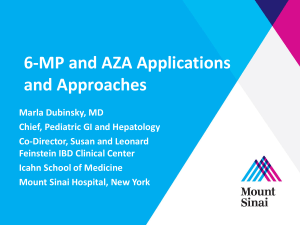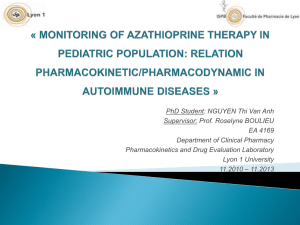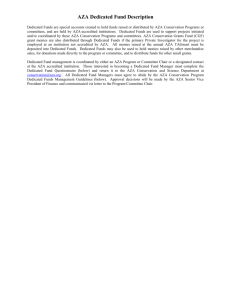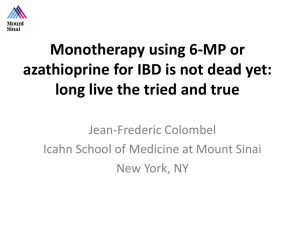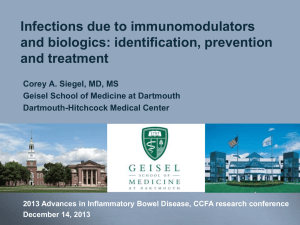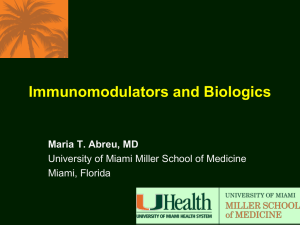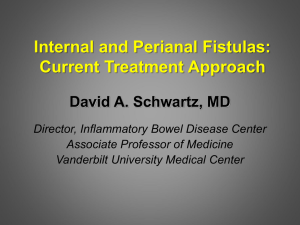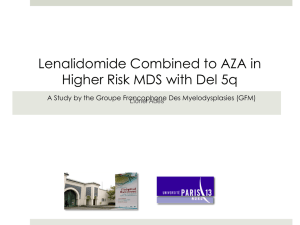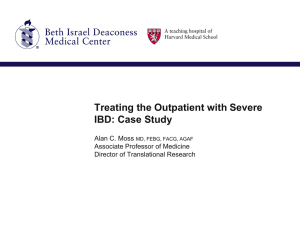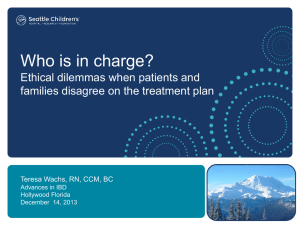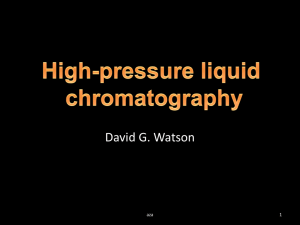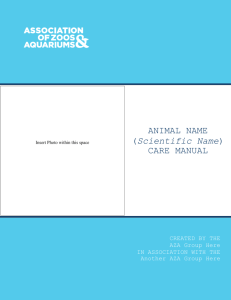Other Major Side Effects to Immunomodulators and/or Biologics in
advertisement
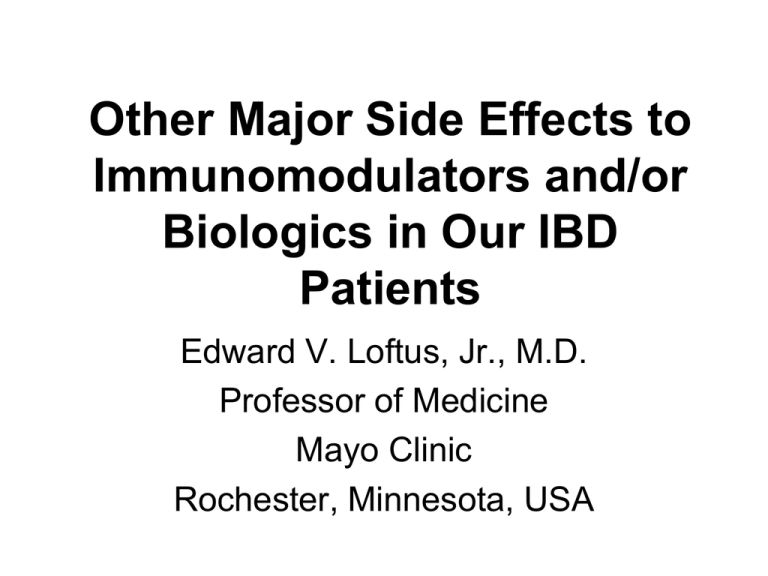
Other Major Side Effects to Immunomodulators and/or Biologics in Our IBD Patients Edward V. Loftus, Jr., M.D. Professor of Medicine Mayo Clinic Rochester, Minnesota, USA Loftus Disclosures • Research/grant support – – – – – – – – – – – AbbVie UCB Janssen Takeda Amgen Genentech Pfizer GlaxoSmithKline Bristol-Myers Squibb Santarus Robarts Clinical Trials • Consulting – – – – – AbbVie UCB Janssen Takeda Immune Pharmaceuticals Overview • Thiopurines – Adverse events and drug interactions – Liver disease • Methotrexate • Calcineurin inhibitors • Anti-TNF – Infusion/injection site reactions – Arthralgias and drug-induced lupus – Demyelination – Cardiomyopathy AZA/6MP Adverse Events in Crohn’s RCTs: Cochrane Meta-Analysis • AZA vs. Placebo – Study withdrawal due to AE – Serious AE 1.7 (0.9-3.1) 2.6 (0.9-7.1) • AZA vs. 5-ASA – Study withdrawal due to AE – Serious AE 1.0 (0.4-2.5) 11.3 (0.6-205) • AZA vs. IFX – Study withdrawal due to AE – Serious AE 1.5 (0.96-2.2) 1.1 (0.8-1.6) Chande N et al, Cochrane Database Syst Rev 2013;(4):CD000545. “Real World” Experiences With AZA/6MP in 2002-4 Setting Olmsted Co, MN Canterbury, NZ Oxford, UK Groningen, NL Nijmegen, NL N 102 216 622 318 50 % Withdrawal Due to AE 25% 26% 28% 23% 22% Loftus CG et al, Am J Gastroenterology 2003 abstract Gearry et al, Pharmacoepidemiol Drug Safety 2004;13:563-7 Fraser AG et al, Gut 2002;50:485-9 Weersma RK et al, Aliment Pharmacol Ther 2004;20:843-50 deJong DJ et al, Eur J Gastroenterol Hepatol 2004;16:207-12 Azathioprine/6-Mercaptopurine Toxicity • • • • • Nausea Allergic reactions Pancreatitis Bone marrow depression Drug hepatitis Blood Dyscrasias Are an Important SAE for 5-ASA Agents--More Likely with Sulfasalazine Ransford RAJ. Gut 2002;51:536-539. Fatalities after developing a blood dyscrasia: Sulfasalazine 5% (7/129) Mesalamine 9% (5/51) Drug Interactions with AZA/6-MP: 5-ASA • AZA and 6-MP may interact with 5-ASAs, potentially causing leukopenia – 5-ASA reversibly inhibits TPMT – Low levels of TPMT causes accumulation 6-TGN, active metabolite – Increased 6-TGN leads to a decrease in WBC – Patients with low baseline levels of TPMT who are taking a combination of AZA/6-MP and 5-ASAs are at risk of clinically significant leukopenia Lowry P et al, Gut 2001; 49: 656 Concurrent 5 ASA & Immunomodulator Use May Increase Myelosuppression: 8-Week NonRandomized Parallel Group Study Lowry PW, et al. Gut 2001;49:656-664. Drug Interaction Between Thiopurines and Anti-TNF? • Infliximab may cause transient increase in 6TGN metabolites in first few weeks, with transient leukopenia, which normalizes • No effect of adalimumab on thiopurine metabolites over 12 weeks in 12 patients Roblin X et al, Aliment Pharmacol Ther 2003;18:917-25. Wong DR et al, J Crohns Colitis 2013 Online early Hepatotoxicity with AZA/6MP • Common cause of drug-induced liver injury (DILI)(>3x ULN) – 3rd most common cause of DILI in Iceland 2010-11 (4% of all cases, tied with infliximab) – Absolute risk of DILI was 1 in 133 with AZA • Spanish nationwide database of AZA safety (n=3,931) – 4% developed hepatotoxicity (>2x ULN) – Dose-related Bjornsson ES et al, Gastroenterology 2013;144:1419-26. 6-MMP and Hepatotoxicity p < 0.05 Median 6-MMP (pmol/8x108 RBC) 6000 5463 4000 2213 2000 0 n=157 Absent n=16 Present HEPATOTOXICITY Dubinsky MC et al, Gastroenterology 2002;122(4):904-15. Allopurinol Therapy for Preferential 6-MMP Metabolism Pre-allopurinol Post-allopurinol 12000 450 400 350 300 250 200 150 100 50 0 10000 8000 6000 4000 2000 0 6-TG 6-MMP Allopurinol 100 mg added; 6-MP/AZA dose reduced to 25% to 50% of baseline Sparrow MP et al. Aliment Pharmacol Ther. 2005;22:441. Allopurinol + AZA/6MP: Clinical Outcome •20 6MP/AZA nonresponders with high 6MMP levels (12 CD, 6 UC, 2 IC) •Mean AZA = 200 mg 6MP = 87 mg Treatment •Decrease AZA/6MP to 25-50% original dose •Allopurinol = 100 mg/day Sparrow MP et al. Clin Gastroenterol Hepatol 2007;5:209-214 Allopurinol Plus AZA/6MP • Might prevent non-hepatic adverse events as well (nausea, myalgia, fatigue): 88% success in one small study • Needs to be done with extreme vigilance – 100 mg allopurinol – Dose reduce to 25% of original dose – Weekly CBC for 4 weeks then monthly – Periodic metabolites Ansari A et al, Aliment Pharmacol Ther 2010;31:640-7. Gearry RB et al, J Gastroenterol Hepatol 2010;25:649-56. Long-Term AZA/6MP Hepatotoxicity • Much less common but much more serious: • Nodular regenerative hyperplasia: 1.2% at 10 years of AZA (but there may be a baseline of NRH in thiopurine-naïve IBD • Veno-occlusive disease of liver • Male gender and extensive SB resection may be risk factors • Much higher incidence of these events with high-dose thioguanine (>40 mg/day) • Watch for thrombocytopenia Reticulin stain DeBoer NK et al, Scand J Gastroenterol 2008;43:604-8 Seksik P et al, Inflamm Bowel Dis 2011;17:565-72. Nausea Only with AZA: Switch to 6MP! • If nausea with AZA is the rate-limiting side effect, it’s worth trying 6-MP; many will tolerate • Olmsted County 1940-2001 – 102 patients treated with thiopurines – 73 treated with AZA • 12 of 24 who stopped AZA were treated with 6-MP, and exactly 50% tolerated it • Edinburgh: 149 pts intolerant of AZA treated with 6MP – Overall 58% tolerated – More likely to tolerate if AZA issue was GI symptom or LFTs compared to flu-like Loftus CG et al, Am J Gastroenterol 2003;9 (Suppl):S242. Kennedy NA et al, Aliment Pharmacol Ther 2013;38:1255-66. Pregnancy Outcome in Crohn’s Disease for Women Treated with Thiopurines: Cohort from the CESAME Study • 215 pregnancies (204 women) in the CESAME cohort 3/04 -12/07. • 3 exposure groups compared: – TP (TP only or associated with another treatment: 5-ASA, CS or anti-TNF) – A drug other than TP – No medication IBD treatment Outcome TPs (n=86) Others (n=84) None (n=45) Births, n (%) 55 (64%) 56 (66.6%) 27 (60%) 12 (21.8%) 9 (16.0%) 4 (14.8%) 8 (14.5%) 7 (12.5%) 2 (7.4%) 2 (3.6%) 3 (5.3%) 1 (3.7%) Prematurity, n (%)* Conclusions • • TP use is not associated with increased Low birth weight under risk of congenital abnormalities 2500g, n (%)* Increased incidence of LBW and prematurity under TP was not significant and may correlate to the underlying disease Congenital abnormalities, n (%)* Coelho J, Gut 2011; 60:198-203. Methotrexate Toxicity • Rash, alopecia • Nausea, mucositis, diarrhea – Folate mitigates much of this – Ondansetron before MTX injections • • • • Bone marrow suppression Hypersensitivity pneumonitis Increased LFTs Hepatic fibrosis/cirrhosis MTX Hepatotoxicity • Risk factors: – Obesity – Alcohol – Diabetes • Screen for HBC/HCV • Monitor LFTs, adjust dose accordingly • Steatosis, steatohepatitis, hepatic fibrosis • Fortunately, risk of hepatotoxicity is low (0.9-1.4 per 100 person-months) Khan N et al, Inflamm Bowel Dis 2012;18:359-67. MTX Pulmonary Toxicity • Approximately 1-8% of treated patients • Various forms – Hypersensitivity pneumonitis – BOOP – Interstitial pneumonia – Pleuritis/effusion • Risk factors – – – – Age>60 RA with pulmonary Low albumin Diabetes • Can present as culture negative pneumonia • Subacute dry cough with dyspnea • Up to 50% have peripheral eosinophilia • Abnl PFTs in subacute presentation: restrictive pattern, ↓DLCO • Sometimes BAL ± lung bx needed • Rx: hold MTX, consider steroids Agent Published Guidelines For Monitoring CBC Oral 5 ASA Agents • Package insert sulfasalazine: • Q2 wk x 1st 3 mo, then qmo x 3 mo, then q3mo Thiopurines • AGA & ACG: • TPMT • Q2 wk “while adjusted” then ≤3 mo • Package insert • Q1 wk x 1 mo, q2wk x3 mo, the “then monthly or more frequently if dosage alterations or other therapy changes are necessary” Methotrexate • AGA “routine” CBC • ACR recommends CBC q 4-8 wk for RA patients • Package insert & Internal Recommendations • Monthly Anti-TNF • British Society of Rheumatology recommends “regular monitoring” in RA patients Cyclosporine and Tacrolimus Toxicity • Nephrotoxicity: – Acute azotemia, usually reversible/doserelated – Rarely chronic progressive • Hypertension: may require Ca++ channel blocker • Neurotoxicity – Tremor common – Seizures rare (more common with low lipids) • ↓K+, ↓Mg++, ↑glucose Adverse Events with Anti-TNF Therapies • • • • • • Neurologic Cardiac Hepatic Rheumatologic Infusion reactions Injection site reactions – Usually minor Neurologic Side Effects: Demyelination • Confusing since there is a baseline association between IBD and multiple sclerosis (Olmsted, Manitoba, GPRD) – MS is between 50% more and 3 times more common in IBD than general population • Lenercept caused increased MS exacerbations in a group of MS patients • Over 150 cases of demyelination after anti-TNF therapy reported to FDA AERS (2000-09) – • Optic neuritis, MS-like presentation Spanish registry of anti-TNF therapy estimates incidence at 0.2 per 1000 p-y for IFX and 1 per 1000 py for ADA Kimura K et al, Mayo Clin Proc 2000; Bernstein CN et al, Gastroenterology 2005; Gupta G et al, Gastroenterology 2005; Lenercept MS Study Group, Neurology 1999; Deepak P et al, Aliment Pharmacol Ther 2013; Ramos-Casals M et al, Autoimmune Rev 2010. Other Neurologic Side Effects Reported with Anti-TNF Therapy • • • • • • Guillain-Barre syndrome Peripheral neuropathy Aseptic meningoencephalitis Leukoencephalopathy Transverse myelitis Chronic inflammatory demyelinating polyneuropathy • Progressive multifocal leukoencephalopathy • Posterior reversible encephalopathy syndrome Singh S et al, Inflamm Bowel Dis 2013; 19:864-72. Congestive Heart Failure and Anti-TNF Therapy • Etanercept trials to treat CHF were negative • Infliximab trial of CHF: highest mortality rate in IFX 10 mg/kg arm • Adalimumab: event rate of CHF <0.26 per 1000 p-y • Use with caution in patients with CHF or reduced LVEF • IFX contraindicated at doses >5mg/kg in NYHA Class III/IV • Consider ECHO ± Cards consult in those with suspected CHF Mann DL et al, Circulation 2004; Chung ES et al, Circulation 2003; Schiff MH et al, EULAR 2005; Kent JD et al, ACR 2005. Hepatotoxicity with Anti-TNF • Most commonly described with infliximab but has been describe with all – PI contains warning – Hepatocellular > cholestatic injury, often with autoimmune characteristics – Slowly improves after drug cessation – Rare cases of hepatic failure/liver transplant Ghabril M et al, Clin Gastroenterol Hepatol 2013;11:558-64. Lupus-Like Reactions with Anti-TNF • Most are women • Virtually all have arthritis/arthralgias • Rash is common • Serositis • ANA positive • Anti-ds-DNA often positive • Don’t forget to check antihistone • Treatment is anti-TNF cessation • Sometimes steroids needed, rarely hydroxychloroquine • Recurrence with a 2nd anti-TNF is relatively low • One study from U of C suggested cumulative 5yr incidence over 10% in women on anti-TNF Wetter DA & Davis MDP. Mayo Clin Proc 2009;84:979-84. Subramanian S et al, Inflamm Bowel Dis 2011;17:99-104. Yanai H et al. Inflamm Bowel Dis 2013;19:2778-86. Infliximab Infusion Reactions • Acute infusion reactions – Associated with antibodies to infliximab – Mild reactions treated with acetaminophen, diphenhydramine and slowing of infusion rate – Severe reactions require cessation, steroids, or epinephrine • Delayed hypersensitivity reactions – Not necessarily associated with ATI – Arthralgias 1 to 5 days after infusion – Sometimes require steroids – More common on monotherapy episodic Natalizumab: Adverse Events Beyond PML • Headache • Infusion reactions, generally mild • Hepatotoxicity – Rare but severe cholestatic liver injury reported Conclusions • A wide variety of side effects can occur with our commonly used medications for IBD • Regular monitoring necessary for many agents
